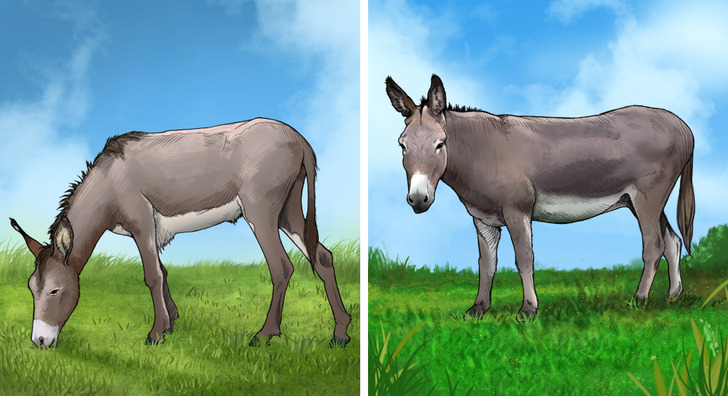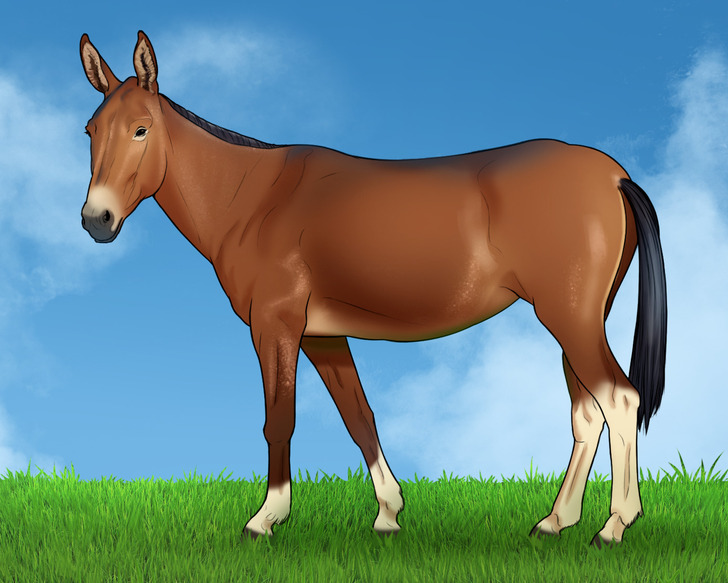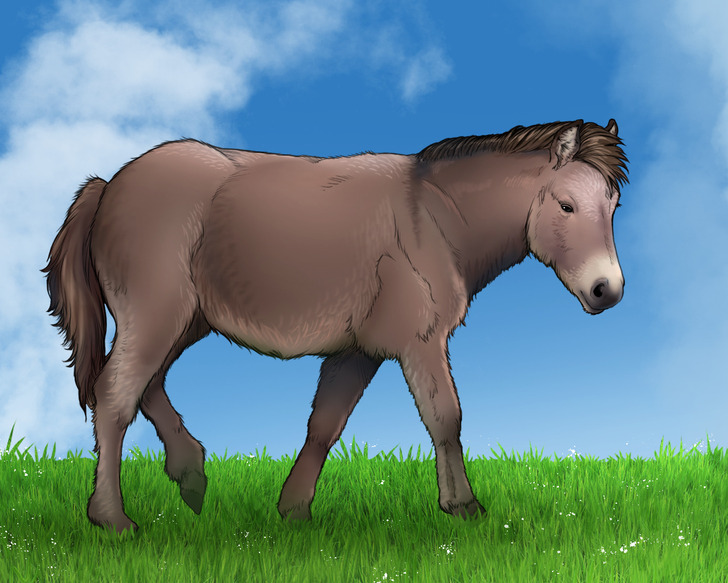How to Tell a Donkey, Mule, and Hinny Apart
5-Minute Crafts is going to explain the differences between the donkey, mule, and hinny.
Donkey

- One of the biggest differences that distinguish a donkey from a mule and a hinny is that a donkey is not a hybrid animal. Every donkey is born from a mother donkey and father donkey, whereas mules and hinnies are born through crossbreeding.
- Even though there are many types of small, average, and large donkeys, the biggest ones are rarely bigger than 56-60 inches in height. This is why donkeys look much shorter than mules — especially because some small types of donkeys are just 35 inches in height.
- So, because they are not very tall, standard donkeys will weigh about 400-600 pounds. This is way less than mules. Hinnies weigh about the same as donkeys.
- Donkeys have short bodies, big faces, short manes, thin legs, and narrow hooves. The ears are big, way bigger than those of a mule.
- A donkey tail is more like a cow’s than a horse’s. It’s thin and long with fur at the tip, and a mule’s tail is like a horse’s.
- Donkeys are not as strong as mules and hinnies. Hybrids can lift more weight and carry loads of things for a longer time.
- Despite the popular misconception, hinnies and mules are less stubborn than donkeys.
Mule

- A mule is also a donkey and horse crossbreed, but they are the result of a male donkey (jack) and a female horse (mare).
- Because a mule’s mother is bigger than a hinny’s (horses are bigger than donkeys), mules are often heavier and bigger than hinnies. An average height is 50-70 inches and they weigh between 800 and 1,000 pounds.
- Despite their tall stature, the legs and the face of a mule are more like a donkey’s. They also have longer ears, a very thin, short mane, and a short (more like a horse’s) tail. The hooves are smaller and straighter than those of a hinny and more like a horse’s.
- Mules are known for their stamina, agility, and stubbornness. They are very smart, patient, and kind, like donkeys, but sometimes, they might be stubborn and aggressive.
- Mules are more resistant to illnesses than hinnies and donkeys, but they don’t have such strong and durable hooves as hinnies and donkeys do, which makes them quite susceptible to different injuries.
- Even though mules can do very different tasks, they are not as strong as hinnies.
- It’s interesting that mules were specifically bred by people, whereas most hinnies appeared naturally.
Hinny

- The hinny, like the mule, is a cross between a donkey and a horse but is different from a mule in one important way: a hinny is an offspring of a male horse (stallion) and a female donkey (jenny).
- Most of the time, a hinny is much smaller than a mule but, depending on the parents, they vary in size. On average, the height is 24-50 inches.
- A hinny weighs way less than a mule. An average hinny weighs between 300 and 800 pounds.
- A hinny’s body is more like a donkey, but the face is that of a small horse. Compared to a mule, the hinny has shorter ears and legs, a thicker mane, and the hooves are more like a donkey’s.
- A hinny is calmer and quieter than a mule. They are less curious and picky about food, easier to control, and stronger. Hinnies are great in the conditions of difficult rocky locations.
- Even though both hinnies and mules are quite stubborn, the former is easier to train.
Share This Article